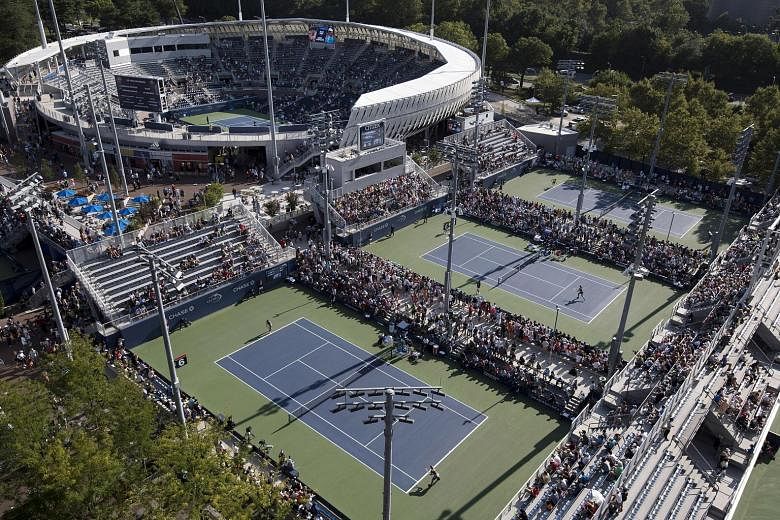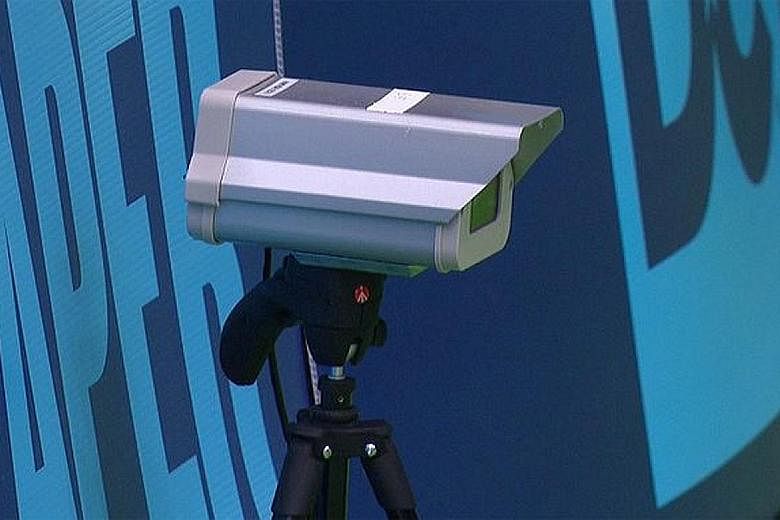NEW YORK • Three weeks of World TeamTennis (WTT) at the Greenbrier resort in West Virginia had come down to a single point on Sunday. In the last match of the final, the New York Empire and the Chicago Smash had a simultaneous championship point at 6-6 in the decisive women's doubles tiebreaker.
Sloane Stephens of the Smash hit her first serve in play. Coco Vandeweghe of the Empire took a bold forehand cut and her return landed deep near the baseline. There was no call by a line judge, because there were no line judges on the court. Instead, the critical call was made electronically, and though Stephens and the Smash asked to see a replay of the virtual ball mark, it only confirmed the judgment of the machine. The replay showed Vandeweghe's shot had landed on the back half of the baseline and the Empire won 21-20.
WTT was using Hawk-Eye Live, an automated system that eliminates line judges and the challenge setup in which players can ask for human calls to be reviewed by an electronic system. With Hawk-Eye Live, the electronic system makes all the calls, even if there are some familiar touches like the recorded voices that shout "out", "fault" or "foot fault".
"For us, actually having a human voice still call 'out' rather than using a beep or some other sound was an important part of making sure the feel of the sport didn't change," said James Japhet, the managing director of Hawk-Eye North America.
But there is no doubt that Hawk-Eye Live represents major change and later this month it is set to make its Grand Slam debut.
The United States Tennis Association (USTA) plans to deploy it on all but its two biggest show courts at the US Open, scheduled for Aug 31-Sept 13. The US Open was the first Major event to use electronic line calling for its challenge system in 2006. In 2018, it became the first Grand Slam event to make that available on all its courts. Now Hawk-Eye will go from serving as quality control and a broadcast tool to being the first and final word.
The system will also be used at the Western & Southern Open, the combined WTA and ATP event transplanted from the Cincinnati suburbs that is scheduled for the week before the US Open at the USTA Billie Jean King National Tennis Centre in New York City.
"Is the system perfect? Probably not," said WTT chief executive Carlos Silva. "Is it close to perfect? Yes. Is it more perfect than humans? 100 per cent yes."
It has the potential to put quite a few human line judges out of work, which is partly why the sport has been slow to adopt Hawk-Eye Live. There is also concern that it could make it more difficult to develop quality chair umpires because line judging is the typical pathway to the chair.
"We're not in the business of trying to remove people from the sport," Japhet said. "It just happens to have been a by-product of this particular advancement of the technology."
WTT chose to forgo line judges and use Hawk-Eye Live for the last three years. The men's Tour has done the same since 2017 at its Next Gen ATP Finals, an experimental event for the best players under the age of 22. But what is driving the US Open's decision above all is the coronavirus pandemic and the need to maintain safety.
By using Hawk-Eye Live on 15 of the 17 match courts, the US Open can drastically reduce the number of line judges on site: from approximately 350 to well under 100.
Only Arthur Ashe Stadium and Louis Armstrong Stadium will still feature full, officiating crews of nine line judges. The other courts will have only a chair umpire, who will call the score and who will focus more on monitoring player behaviour and the pace of play.
The umpires cannot overrule the machines on line calls, only taking over if the system breaks down. If the audio system were to fail, a light attached to the umpire's chair would still indicate when Hawk-Eye has determined a shot is out.
The system is not entirely glitch-free. Japhet said Hawk-Eye officials monitoring the system have access to a broadcast feed as an additional tool for rare problematic occasions. But he said the automated system had been tested and shown to be accurate within 2mm.
The ATP Tour has temporarily approved the system's use at all ATP events because of the pandemic. The women's Tour has for approved its use at the Western & Southern Open, which will be the first WTA event to use the system.
NYTIMES


